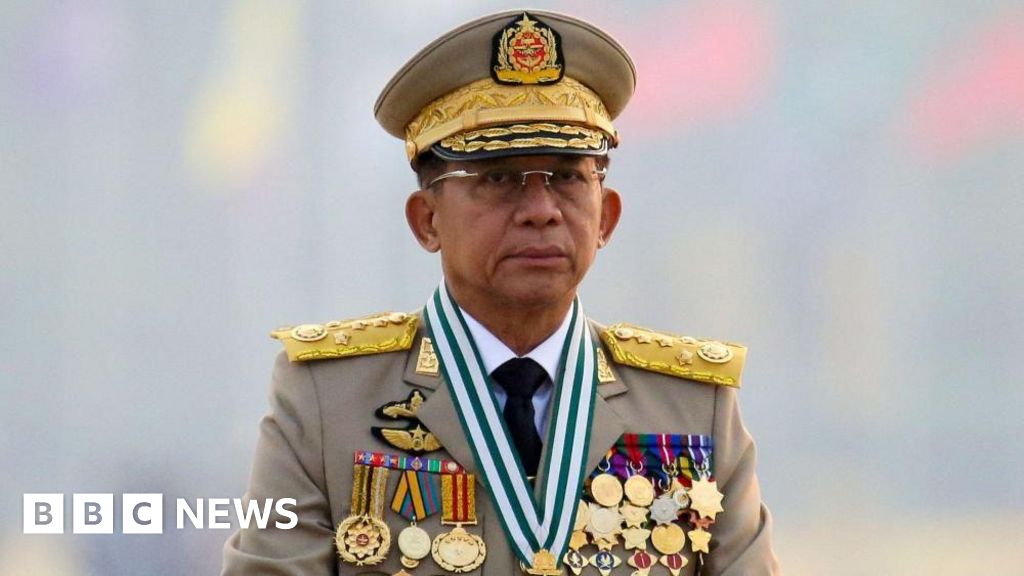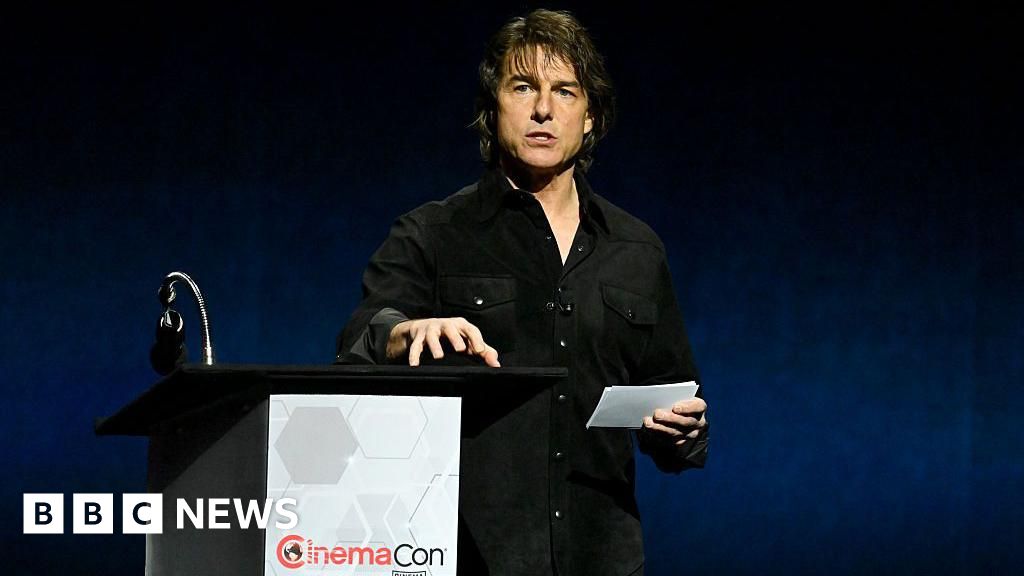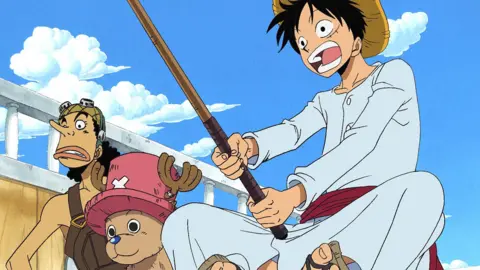 Toei
ToeiCreators and fans of the Japanese anime series One Piece explain why the show has become one of the most popular franchises in the world.
It is a show that has run for more than 1,000 episodes – and it counts French President Emmanuel Macron and rapper Travis Scott as fans. The comic series it is based on, meanwhile, has sold more than 500 million copies, earning a Guinness World Record.
And you can even buy merchandise for the series in clothing stores up and down the country.
The show is One Piece, a Japanese anime that celebrates its 25th anniversary in 2024.
Based around a series of comics by manga auteur Eiichiro Oda, it follows Monkey D Luffy, the leader of a group of pirates travelling the world on the hunt for a mysterious treasure known as the One Piece. Along the way, they engage in battles with the government and their fellow pirates, using powers gained by eating “Devil Fruits”.
As the series is now streaming on BBC iPlayer, creators and fans of the show explain how One Piece became such a phenomenon.
‘A niche within a niche’
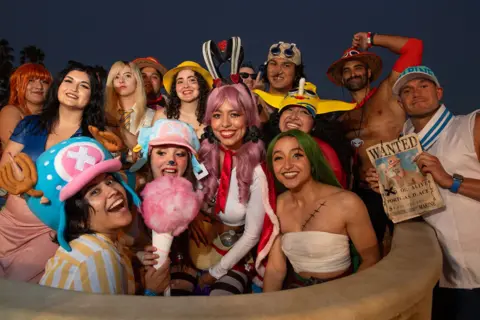 Getty
GettyWhen Zach Logan began his One Piece Podcast in 2009, the show was little-known in the United States.
“You could measure it from anime conventions that we went to,” he tells the BBC. “Today they would be overrun by One Piece fans, but then it was like two and a half people – two people, and then their baby who they’d dressed up as Chopper.” In One Piece, Chopper is a toddler-sized hybrid of human and reindeer.
Logan describes the show in the late 2000s as a “niche within a niche”, with a small following within the already small fanbase for anime in the US.
In Japan, however, the success of One Piece was more instantaneous. When it was first published in 1997 in magazine Shonen Jump, the publication’s readership was falling behind that of its rival Shonen Magazine. One Piece’s inclusion helped Shonen Jump reclaim its spot as the most-read manga in Japan.
Hiroyuki Nakano, the current editor of the One Piece manga, read the series from its inception.
“I remember being truly amazed, thinking, ‘an incredible comic has begun,’” he says via an interpreter.
‘One Piece changed the manga industry’
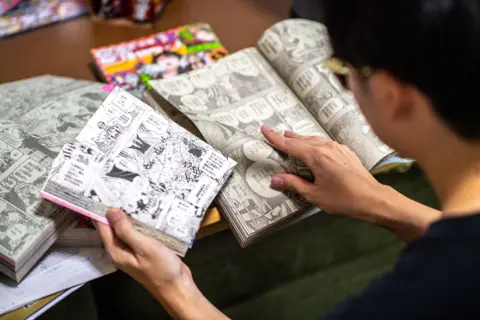 Getty
GettyIn the mid-1990s, manga (a term used for a range of Japanese comic books and graphic novels) was at its peak, with 1.34 billion manga collections sold in 1995. Popular titles of the time included Dragon Ball (about a martial artist on the search for magical orbs), Slam Dunk (about a basketball team) and Doraemon (about a time-travelling robotic cat).
For Nakono, however, the One Piece comic series changed the industry. “Instead of relying on a haphazard, week-by-week method,” he says, “it carefully built up characters, creating a story structure that leads to an emotional climax at the end.”
“There was a strong emphasis on cliffhangers in manga before One Piece,” he continues. “This approach often led to disappointments when the developments didn’t meet the build-up’s expectations.”
When it comes to the anime series, Logan adds that the show’s approach also gives it a stronger emotional punch than other anime.
He highlights the Drum Island arc (episodes 78 to 91), when viewers learn the backstory of Chopper, who was shunned by his fellow reindeer. “Watching Drum Island,” he says, “anyone with a soul would cry.”
The first episode of the anime adaptation aired in October 1999, but it took over a decade for it to develop a significant following outside Japan.
First transmitted in the US in 2004, the early dubbed version was criticised for its unconvincing voice actors and the decision to censor some of the battles by removing blood and replacing guns with water pistols or shovels.
“People were turned off by the first version of it,” says Logan.
Logan says the international popularity of the show was turbo-charged during the pandemic. “It was like gasoline on a fire. When people were at home, they had no excuse not to watch a show with 900-plus episodes.”
‘You’ll say ‘why isn’t there more?’’
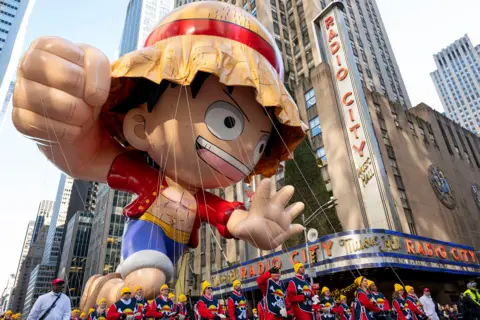 Getty
GettyThough some may be intimidated by the show’s length – a binge from beginning to end would take two-and-a-half uninterrupted weeks – for Nakano, this is the show’s strength.
“When it comes to the sheer number of characters and ideas created by Oda-sensei [One Piece creator Eiichiro Oda], no other body of work can match it.”
Logan compares the show to Doctor Who, another cult show that can leave people intimidated by its length and leave them wondering when to start.
“You could skip certain parts and jump in at a certain point, but you’ll miss some important, brilliant stuff,” he says. “In One Piece, there’s stuff in episodes from 1999 or 2002 that’s still very prescient to the show because of how Oda interweaves things.
“I used to tell friends that they could skip things, but now I feel I would be committing malpractice to say that!
“People will start by complaining how long it is, and when they get to the end they’re like, ‘why isn’t there more?’”


